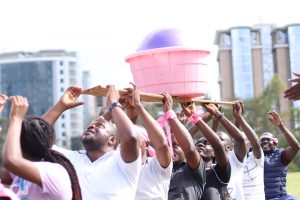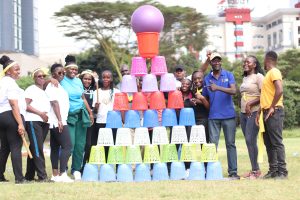How to Measure the Impact of Team Building Activities
Measure Team Building Impact to understand how activities truly benefit your team and organization. Tracking outcomes helps you see if your efforts improve communication, collaboration, and productivity. By turning fun sessions into measurable results, you ensure every team-building event supports long-term growth and success.
Why It’s Important to Measure

- Validate your investment—team building often involves time, money, and logistics. Stakeholders want to see demonstrable value.
- Guide future events—what worked? What didn’t? Measurement tells you what to repeat, improve, or eliminate.
- Align with business goals—Team cohesion or morale is nice, but does it translate into increased productivity, lower turnover, or better customer service?
- Continuous improvement—organizations evolve, teams change. What was once effective may need refreshing or redesign.
Key Metrics & What to Track
Here are useful metrics you can use to measure the impact of team building:
| Metric | Why It Matters | How You Might Measure It |
|---|---|---|
| Participant Satisfaction | Indicates how engaged participants felt. Happy participants are more likely to internalise lessons. | Post-event surveys (Likert scale), asking for ratings on enjoyment, relevance, and facilitator quality. |
| Behaviour Change | Did communication improve? Collaboration increase? Are people applying what they learned? | Follow-up surveys or interviews some weeks/months later. Ask for specific examples of changed behaviors. |
| Team Cohesion / Trust | A key soft measure: before vs after how well people feel they trust their colleagues, or how comfortable they are asking for help. | Pre- and post-event questionnaires measuring trust, openness, and mutual support. |
| Performance Metrics | Did outputs change? For example, project delivery speed, error rates, customer satisfaction, or sales. | Compare KPIs before and after the event (e.g., quarterly sales, customer feedback scores, productivity metrics). |
| Employee Engagement / Retention | Engaged employees tend to stay longer and be more motivated. | Use engagement survey scores; track turnover/churn rates before and after absenteeism. |
| Leadership & Initiative | Are team members more proactive? Are managers noticing more initiative? | Manager feedback, peer reviews, and leadership assessments. |
| Return on Investment (ROI) | Qualifying financial or operational gain vs cost of event | Compute (Benefit – Cost) / Cost. Estimate gains (e.g., improved productivity, less rework) attributable to team building. |
| Soft Outcomes | Networking, morale uplift, cross-departmental collaboration, and idea generation. | Qualitative feedback: stories, testimonials, focus groups, and counts of new cross-team projects or collaborations started. |

Steps to Measure Effectively
- Set clear objectives up front
Before doing the team-building event, define what you want to achieve. E.g. “increase cross-department communication,” “reduce conflict,” “boost project delivery speed by 10%.” These become your benchmarks. - Establish baselines
Use surveys, internal data, and KPI reports before the activity so you have something to compare against. - Design your survey instruments
Develop pre-event and post-event questionnaires. Keep them short, focused, and collected digitally if possible. Include both quantitative (scales) and qualitative (open-ended) questions. - Collect data immediately after

Right after the event, ask participants about their experience, what they learned, and how they expect it might change their work. - Follow up after a period (e.g., 3-6 months)
Measure if behaviors have changed and whether there is sustained impact. Compare your post-activity metrics to the baseline. - Gather stakeholder feedback
Speak with managers or supervisors: have they noticed changes in collaboration, efficiency, morale or conflict? Ask for concrete examples. - Analyze operational/business metrics
Where possible, track related KPIs: productivity, project completion times, customer satisfaction, sales, turnover, employee engagement survey results, etc. - Compile a report & share insights
Combine quantitative data, qualitative stories/testimonials, and your analysis to show impact. Use visuals (charts, comparison tables) and recommend next steps. - Iterate & improve

Use your findings to refine your next team-building event: change activities, adjust focus, tweak timing, or consider hybrid/remote elements if needed.
Challenges & Tips
Attribution can be tricky—changes in performance may be due to many factors (market changes, leadership changes, new systems). Use control groups or compare teams that had versus didn’t have team-building intervention, if possible.
Getting good response rates for follow-up surveys.
Ensuring managers buy into the evaluation process (so they ask for and share the relevant performance data).
Balancing between qualitative stories (rich feedback) and quantitative metrics (hard to dispute).
Book Your Perfect Team Building Experience
At Team Building Kenya, we design experiences that blend psychology and fun to strengthen workplace unity and productivity. Beyond creating memorable moments, we help organizations measure team-building impact through clear goals, surveys, and performance tracking. Whether you want to boost morale, improve communication, or enhance leadership, we ensure every activity delivers lasting and measurable results.
Explore exciting destinations and tailor-made experiences across Kenya:
Team Building Packages
Transform your team today—because great teams aren’t born, they’re built.
🔗 Visit Team Building Kenya to get started today!


